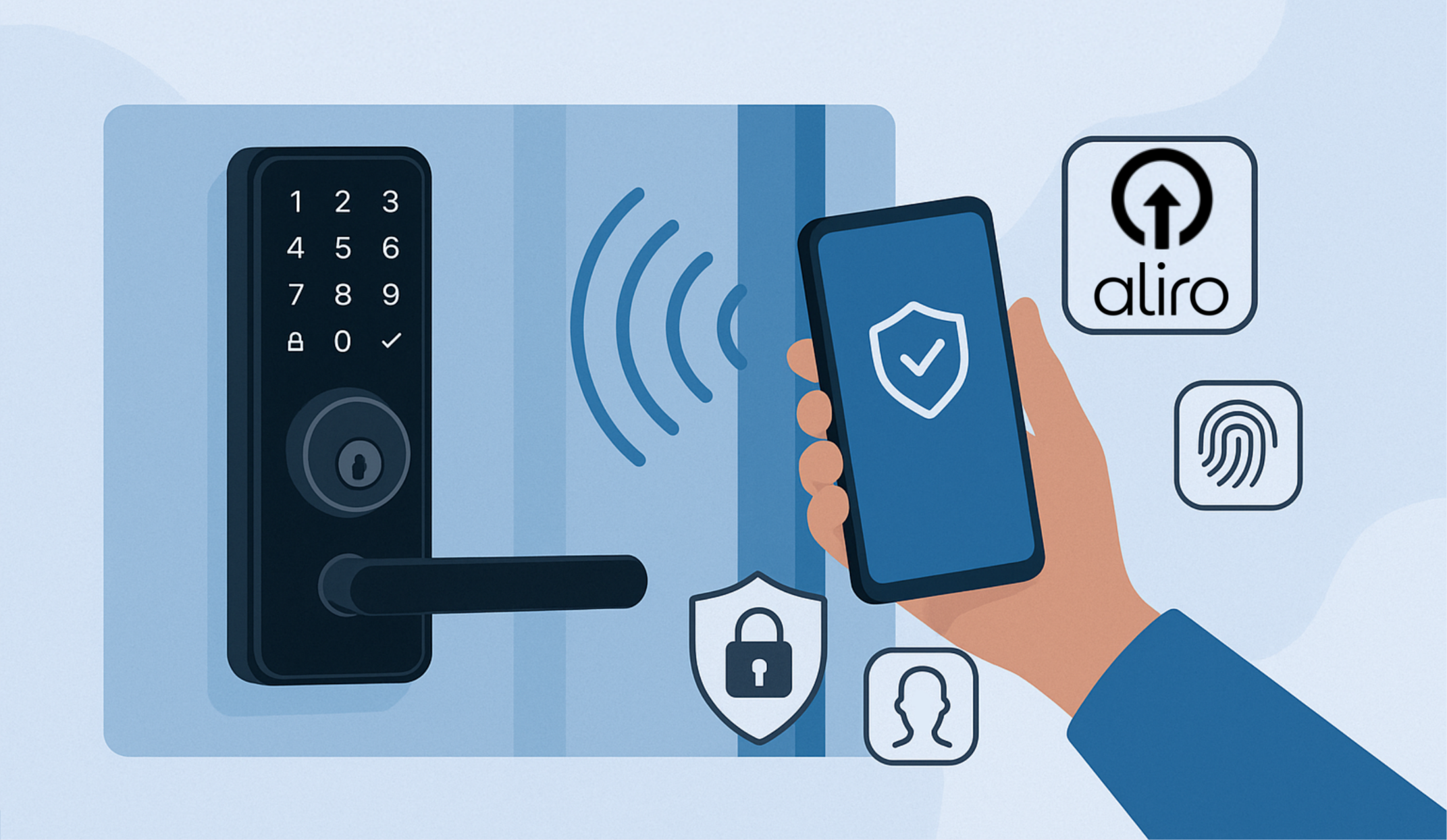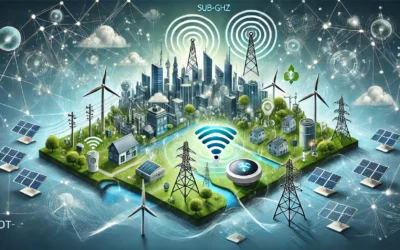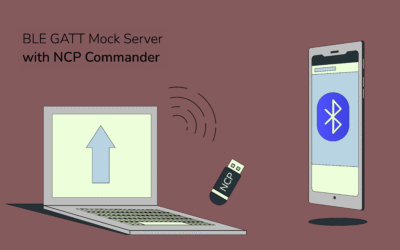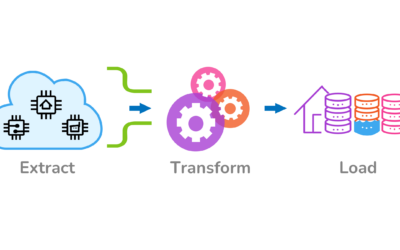Table of Content
In today’s fast-evolving digital landscape, business leaders are continuing to invest in the Internet of Things (IoT) to drive innovation and operational efficiency. However, as companies scale their IoT initiatives, they face critical challenges—most notably, powering an ever-growing network of connected devices.
While initially convenient, traditional batteries present significant environmental and logistical issues, including hazardous waste, frequent replacements, and scalability limitations. These challenges are prompting a paradigm shift toward Ambient IoT solutions that promise to extend device lifespans, reduce environmental impacts, and secure a leadership position in IoT innovation.
With an estimated 78 million batteries set to be dumped globally every day by 2025, traditional power sources’ environmental and operational drawbacks confirm the shift toward energy harvesting and Ambient IoT solutions.
As part of Krasamo’s IoT Concepts Series, in this blog post, we explore ambient IoT and energy harvesting to promote the design and development of self-sustaining IoT devices.
Ambient IoT: The Future of Sustainable Connectivity
Ambient IoT represents a transformative approach to powering IoT devices by using naturally available energy from our environment. Instead of relying on traditional batteries, these devices capture energy from sources such as light, heat, motion, and electromagnetic fields. By integrating advanced energy harvesting techniques, ambient IoT devices can extend their operational life significantly, ensuring continuous connectivity while reducing environmental impact.
What is Energy Harvesting?
Energy harvesting is the process of capturing energy from the environment and converting it into electrical power that can be used to operate electronic devices. This innovative approach taps into ambient energy sources—such as sunlight, heat, vibration, and radio frequency (RF) signals—to generate power traditionally supplied by batteries. By converting naturally occurring energy into electricity, energy harvesting not only enables battery-less operation but also addresses significant environmental, economic, and technical challenges associated with conventional power sources.
At its core, energy harvesting involves three fundamental steps: energy capture, conversion, and storage. In the capture phase, solar cells, thermoelectric generators (TEGs), piezoelectric sensors (kinetic motion), and RF antennas absorb ambient energy.
This raw energy is converted into a stable, usable form through specialized circuitry and power management integrated circuits (PMICs). The conversion process is optimized to work with the typically low voltage and current levels available from ambient sources.
Finally, the converted energy is stored in capacitors or other energy storage elements, ensuring power is available even when the ambient energy source is intermittent.
Energy harvesting in Ambient IoT involves using various ambient sources to generate small bursts of energy or constant trickle power. This energy can be used immediately (as bursts) or stored (for continuous operation) to power communications or sensor operations. The goal is to remove batteries from the equation, especially in hard-to-reach installations.
Approaches to Energy Harvesting Strategies
- An Energy Burst is a quick, high-power output generated by transient events (like pressing a kinetic switch or a sudden movement). In this mode, a brief pulse of energy is sufficient to power a communication or sensor action, after which the energy supply rapidly diminishes.
A button-based energy burst is a feature in Silicon Labs‘ energy harvesting solutions, where a button’s physical press and release generates a short, high-power burst of energy. This burst is just enough to quickly transmit data packets—using protocols like Zigbee Green Power or Bluetooth LE—before the device returns to a low-power state, enabling battery-less operation. - Constant Trickle Power is a steady, low-level energy supply from a solar cell or a continuous ambient source. Here, energy is harvested gradually and can be stored over time, enabling ongoing operation even during periods of lower ambient energy availability.
One of the most compelling benefits of energy harvesting is its potential to extend the operational life of IoT devices. Traditional batteries not only require regular replacement—leading to high maintenance costs and environmental waste—but also impose limitations on device miniaturization and scalability.
Various industries are beginning to adopt energy harvesting as a key enabler for next-generation IoT solutions. In industrial and smart building applications, harvesting ambient energy allows devices to operate autonomously, overcoming the challenges posed by traditional wiring and battery replacement.
In consumer electronics, energy harvesting technologies pave the way for smaller, more efficient devices that can function over extended periods without manual intervention.
Technologies like Silicon Labs’ xG22E SoC family illustrate how advanced, ultra-low power platforms can seamlessly integrate with energy harvesting circuits to create robust, multi-protocol solutions for sustainable IoT deployments.
Benefits of Ambient IoT
Battery-Free Operation: Reduces electronic waste and maintenance costs by eliminating the need for frequent battery replacements.
Longer Uninterrupted Use: Devices can operate for extended periods without the periodic battery replacements that limit current battery-powered systems.
Sustainable & Eco-Friendly: Ideal for smart cities, industrial IoT (IIoT), and remote locations, Ambient IoT minimizes environmental impact.
Scalable & Cost-Effective: Enables widespread deployment of IoT sensors in previously unreachable areas while lowering the frequency and expense of system maintenance.
Additional Benefits of Ambient IoT extend its core advantages further by enabling denser networks in constrained environments, fostering innovation with compact device configurations (wearables), and unlocking new use cases in challenging environments.
Devices can also dynamically adjust their operations based on available energy, reducing standby power draw and optimizing resource usage in systems such as HVAC and lighting.
Key Communication Technologies for Ambient IoT
Bluetooth LE in Ambient IoT
In Ambient IoT, Bluetooth Low Energy (BLE) is a critical enabler for achieving energy-efficient, self-sustaining connectivity. To succeed, these systems require hardware specifically optimized for energy harvesting, where every microjoule counts.
A common approach is beaconing, which allows devices to periodically wake, transmit vital sensor data or status updates, and then return to a deep sleep mode until enough ambient energy has been harvested for the next cycle. To make this possible, the system must be highly adaptive.
By implementing logic in the device firmware, parameters such as payload size, transmission power, and sleep intervals can be dynamically adjusted based on the real-time energy budget. These application-level optimizations enable reliable and scalable communication for asset tracking, indoor navigation, and smart building automation, positioning Bluetooth as an essential technology in the future of sustainable Ambient IoT.
Zigbee Green Power
Zigbee Green Power is a specialized extension of the Zigbee standard that enables ultra-low power, battery-less (or ultra-long battery life) devices powered by harvested energy to join the network with minimal power consumption. This approach allows smart switches, sensors, and other IoT devices to operate autonomously without regular battery replacements, reducing maintenance costs and environmental impact.
The technology relies on several key principles to achieve this efficiency:
- Compact, Energy-Efficient Messaging: Green Power devices (often called GPDs) are engineered to use very little energy by transmitting short, compact packets—called Green Power Data Frames (GPDFs)—that require minimal power to send.
- One-Way Communication with Proxies: Since these devices have extremely limited energy, they send data one way without continuously listening to incoming messages. A Green Power Proxy—an always-on, full-function Zigbee device—receives these GPDFs. The proxy then encapsulates the information into standard Zigbee frames, forwarding it to the appropriate endpoint or sink within the network.
- Seamless Integration and Security: The pairing process, also known as commissioning, maps each Green Power Device to a specific sink (such as a light or sensor controller). During this initial phase, the device—such as a battery-less smart switch—may require several activations (or presses) to exchange the necessary security keys and interact with the network.
Once this secure pairing and key exchange are completed, the device reverts to normal operation, where a single press is sufficient to control functions like turning lights on or off. Efficient security protocols help maintain data transmission that remains reliable and secure throughout this process despite the low-power operation.
- Dynamic Adaptation:Zigbee Green Power is designed to work within a dynamic energy budget. The devices can adjust their transmission parameters—such as the frequency of beaconing and the payload size—based on the energy they harvest. This dynamic adjustment helps maintain connectivity even when the harvested energy is variable.
Sub-GHz Wireless in Ambient IoT
Sub-GHz wireless technology is a natural fit for Ambient IoT applications that rely on energy harvesting. Operating in lower frequency bands (typically below 1 GHz), these networks require significantly less power to transmit data, aligning well with the limited energy available from ambient sources such as solar, thermal, or RF energy. This low power consumption conserves energy and extends the device’s operational lifetime, making battery-less or low-maintenance systems feasible.
Additionally, sub-GHz frequencies offer superior range and penetration, ensuring reliable communication even in environments with physical obstacles or over large areas—an essential attribute for distributed sensor networks in settings like smart HVAC systems. Energy-efficient transmission and robust connectivity enable ambient-powered devices to function effectively, providing periodic monitoring and control without the need for battery replacements. Learn more about Sub-1 GHz.
Ambient IoT – Use Cases
Ambient IoT leverages energy harvesting to enable a new generation of self-sustaining, battery-free devices across various sectors. These solutions provide scalable, maintenance-free options for modern connectivity.
Here’s an overview of how Ambient IoT is applied in different domains:
Smart Buildings and Home Automation
- Smart Switches and Controls: Kinetic pulse-harvesting doorknobs and light switches allow flexible relocation without renovations.
- Smart Locks: Energy-efficient door locks operate reliably without traditional batteries.
- Home Sensors: Environmental monitoring sensors for temperature, humidity, and more harness ambient energy to deliver continuous data.
IIoT
- Asset Tracking and RFID Solutions: Using energy-harvesting, battery-free RFID tags, companies can achieve real-time inventory management, asset tracking, and access control.
- Factory Automation: Sensors monitor equipment and processes, ensuring smooth, uninterrupted operations.
- Predictive Maintenance: Energy-harvesting sensors using vibration and thermal energy detect potential equipment failures before they occur.
Smart Agriculture
- Crop Management: Sensors in greenhouses powered by solar or vibration energy eliminate frequent battery changes, even in hard-to-reach areas.
- Livestock Monitoring: Energy-efficient sensors monitor cattle health and barn conditions, ensuring continuous operation.
Smart Cities and Utilities
- Smart Metering: Energy-efficient utility meters operate reliably with minimal or no battery replacements.
- Environmental Monitoring: Widely deployed sensors monitor urban conditions without incurring high maintenance costs.
Consumer Electronics
- Gaming and Entertainment: Indoor solar and RF-powered remote controls and keyboards offer energy-efficient Bluetooth solutions.
- Electronic Shelf Labels (ESLs): Battery-less or long-life labels provide sustainable, cost-effective pricing displays.
The Silicon Labs xG22E SoC Family is a Game-Changer
The Silicon Labs xG22E SoCs are at the forefront of energy-efficient IoT technology. These SoCs (system on chip) have been meticulously optimized for energy harvesting applications, offering ultra-low power consumption characteristics—such as an 8ms Power-on-Reset that uses only 150 microjoules and an EM4 wake-up that takes just 1.83 milliseconds consuming only 16.6 microjoules.
With a dual-core architecture featuring Cortex-M33 and Cortex-M0+ cores, these SoCs support multiple 2.4GHz protocols, including Bluetooth LE, Zigbee Green Power, and proprietary protocols. This multi-protocol support, with high RF performance and advanced power management features, makes the Silicon Labs Explorer kit ideal for developing battery-less IoT devices. Learn more about the explorer Kit by visiting Silicon Labs’ official website: Simplifying Ambient IoT with xG22E Energy Harvesting Explorer Kit
Moreover, Silicon Labs equips developers with an extensive suite of development tools and sample applications—readily available on GitHub—that simplify prototyping and performance evaluation. The Energy Harvesting Explorer Kit supports AC and DC energy sources through dedicated adapters, allowing comprehensive testing in diverse ambient environments.
Silicon Labs has partnered with e-peas to develop energy harvesting solutions that use e-peas’ PMICs (Power Management Integrated Circuits).
Kit Components
The energy harvesting kit includes a suite of dedicated components designed to facilitate experimentation and integration into IoT projects:
- Explorer Kit Board:Optimized to isolate power leakages and support external measurements, this board provides a stable foundation for evaluating energy harvesting performance.
- Dual Harvester Shield (BRD8201A): The Dual Harvester is the master shield for energy harvesting design. It is built around the e-peas AEM13920 PMIC, enabling the simultaneous harvesting of energy from two sources (AC or DC). It also supports experimentation with alternative battery chemistries and supercapacitors, allowing users to measure and compare different ambient energy configurations.
- Kinetic Button Shield (BRD8202A with BRD8206A): The Kinetic Button is designed for kinetic or pulse-based energy harvesting; this shield demonstrates how a kinetic switch can convert mechanical motion into electrical energy—sufficient to briefly power a wireless SoC and transmit data.
- Battery Shield (BRD8203A) :As a baseline module, the Battery Shield powers the Explorer Kit with a battery, capacitor, or alternate PMIC circuitry. It enables developers to take measurements to compare battery and battery-less performance quickly, establish power consumption baselines, and experiment with different battery chemistries through multiple test points. It is primarily intended for debugging stand-alone operation scenarios and for evaluating battery performance versus battery-less solutions rather than incorporating its own PMIC circuitry.
- Input AC-DC Adapters (BRD8204 & BRD8205): Input adapters enable the kit to work with AC and DC power sources, ensuring users can simulate and evaluate energy harvesting from various ambient environments.
A Krasamo IoT engineer can provide more insights about the kit’s versatility and how to make modifications in software and hardware, such as adjustments to storage and power management.
Image Description: Image from Silabs.com –Harvesting Energy for Smarter IoT with Silicon Labs xG22E
Bluetooth Connectivity on the xG22E SoC Family
Silicon Labs’ xG22E SoC family is engineered specifically for these ultra-low power and energy harvesting applications. To meet diverse project needs, developers using this hardware can choose between two distinct software stacks for wireless communication.
Standard Bluetooth LE for Interoperability
The first path is the standard Bluetooth LE stack. As the lowest-power Bluetooth LE solution in the portfolio, the BG22E variant supports direct point-to-point communications (via the GATT database) and broad data broadcasting using extended advertisements. This dual capability allows devices to connect seamlessly and transmit essential data—up to 1650 bytes in a single burst—while maximizing energy efficiency.
RAIL for Maximum Efficiency and Customization
Alternatively, developers can use RAIL (Radio Abstraction Interface Layer), Silicon Labs’ proprietary interface that provides direct, low-level access to the radio hardware. This approach bypasses the full Bluetooth stack, enabling highly optimized and streamlined communication for the most energy-constrained applications. In practice, this allows a device to use a brief burst of harvested energy to quickly transmit data packets using a custom protocol, which is more efficient for specific tasks like proprietary beacons or simple data bursts.
From Concept to Prototype
Both connectivity approaches are integrated within the Energy Harvesting Explorer Kit and are supported by Silicon Labs’ Simplicity Studio platform and the EFR Connect mobile app. This enables developers to choose the most appropriate protocol for their specific ambient energy use case and rapidly move from design to deployment.
Krasamo IoT Development Company
At Krasamo, we specialize in delivering innovative, energy-aware IoT solutions tailored to modern, sustainable connectivity needs. Our comprehensive services include:
- Developing and designing IoT devices optimized for limited power budgets.
- Prototyping IoT solutions and validating designs before transitioning to full-scale battery-less deployments.
- Assisting customers in moving from battery-powered to battery-less solutions.
- Enabling and optimizing networks that integrate Green Power technologies.
- Developing ultra-low-power firmware and integrating edge AI for ambient-powered sensors.
- Collaborating with partners to integrate cutting-edge power management and predictive maintenance solutions.
Contact Us
Additional Resources
- Simplifying Ambient IoT with xG22E Energy Harvesting Explorer Kit
- UG582: EFR32xG22E Explorer Kit User’s Guide
- UG392: Using Silicon Labs Green Power with Zigbee EmberZNet PRO
- Energy Harvesting with Silicon Labs’ Dev Kit
- What is Zigbee Green Power?
- Bluetooth – Optimized Energy Consuming Sensor
- The Ambient IoT: The Emergence of a New Class of Bluetooth® IoT Devices
- UG103.15: Silicon Labs Green Power Fundamentals
- Tech Talk Harvesting Energy for Smarter IoT with Silicon Labs xG22E
- e-peas, Silicon Labs Simplify the Implementation of Battery-less Ambient IoT Smart Home Systems in Exclusive First Reveal Webinar
- One Devkit, Four Energy Sources: Solar, RF, Vibration & Heat












I gotta respectfully disagree with the notion that Sub-GHz wireless tech is a no-brainer for ambient IoT – didn’t silicon labs’ own efr32xg series show otherwise?
Idk if you guys noticed, but ambient iot isn’t just about constant trickle power or energy bursts,. it’s more than that. for example, some devices can use thermal harvesting (heat to electricity) or piezoelectric sensors (vibration to electricity). and don’t even get me started on supercapacitors – they’re game changers for energy storage in iot devices. just saying, ambient iot is a broader concept than this post makes it out to be
I’ve worked on a few IoT projects myself and I gotta say, this kit looks pretty cool! 🤖 The idea of using ambient energy harvesting is definitely an interesting one. I’ve seen some cases where it’s used in industrial automation settings to reduce power consumption. As for the Battery Shield, I think it’s great that they’re providing a baseline module to compare battery and battery-less performance. For those looking to dive deeper into IoT consulting or implement similar solutions, I’d recommend checking out some of the more advanced energy harvesting modules available on the market.
As an information security analyst with a focus on IoT consulting, I appreciate the author’s discussion of ambient energy harvesting as a key enabler for next-generation IoT solutions. It’s worth noting that energy harvesting can also introduce new security risks, such as unauthorized data transmission or device tampering, particularly in industrial and smart building applications. Implementing secure design patterns and protocols from the outset will be crucial to mitigate these risks. I’d love to see a follow-up post exploring this aspect of IoT development.
I must say, this is a most intriguing discussion on ambient IoT. In fact, I’ve worked with several clients who have benefited from leveraging IoT consulting services to integrate energy harvesting into their device designs. For instance, our team successfully implemented an industrial IoT solution that utilized solar panels and kinetic energy harvesting to power sensors in a factory setting. This not only eliminated battery replacement costs but also reduced downtime due to maintenance. The results were quite impressive, I must admit.